-
 Bitcoin
Bitcoin $106,754.6083
1.33% -
 Ethereum
Ethereum $2,625.8249
3.80% -
 Tether USDt
Tether USDt $1.0001
-0.03% -
 XRP
XRP $2.1891
1.67% -
 BNB
BNB $654.5220
0.66% -
 Solana
Solana $156.9428
7.28% -
 USDC
USDC $0.9998
0.00% -
 Dogecoin
Dogecoin $0.1780
1.14% -
 TRON
TRON $0.2706
-0.16% -
 Cardano
Cardano $0.6470
2.77% -
 Hyperliquid
Hyperliquid $44.6467
10.24% -
 Sui
Sui $3.1128
3.86% -
 Bitcoin Cash
Bitcoin Cash $455.7646
3.00% -
 Chainlink
Chainlink $13.6858
4.08% -
 UNUS SED LEO
UNUS SED LEO $9.2682
0.21% -
 Avalanche
Avalanche $19.7433
3.79% -
 Stellar
Stellar $0.2616
1.64% -
 Toncoin
Toncoin $3.0222
2.19% -
 Shiba Inu
Shiba Inu $0.0...01220
1.49% -
 Hedera
Hedera $0.1580
2.75% -
 Litecoin
Litecoin $87.4964
2.29% -
 Polkadot
Polkadot $3.8958
3.05% -
 Ethena USDe
Ethena USDe $1.0000
-0.04% -
 Monero
Monero $317.2263
0.26% -
 Bitget Token
Bitget Token $4.5985
1.68% -
 Dai
Dai $0.9999
0.00% -
 Pepe
Pepe $0.0...01140
2.44% -
 Uniswap
Uniswap $7.6065
5.29% -
 Pi
Pi $0.6042
-2.00% -
 Aave
Aave $289.6343
6.02%
Is the monthly MACD gold or not a weak signal?
The monthly MACD golden cross in crypto can signal potential trend changes but requires confirmation from volume, price action, and on-chain data to avoid false signals.
Jun 19, 2025 at 04:00 pm

Understanding the MACD Indicator in Cryptocurrency Trading
The Moving Average Convergence Divergence (MACD) is a widely used technical analysis tool in cryptocurrency trading. It helps traders identify potential trend reversals, momentum shifts, and entry or exit points. The MACD line is derived from the difference between two exponential moving averages (EMAs), typically the 12-period and 26-period EMAs. A signal line, usually a 9-period EMA of the MACD line, is then plotted alongside it. When the MACD line crosses above the signal line, it generates what's known as a "golden cross", which is often interpreted as a bullish signal.
However, in the context of monthly chart analysis, this signal can be misleading if not interpreted with caution. Unlike daily or hourly charts, monthly data captures long-term trends and macroeconomic influences that may not align with short-term technical signals. Therefore, interpreting the monthly MACD golden cross requires deeper scrutiny and understanding of broader market conditions.
Important:
The MACD indicator should never be used in isolation when making trading decisions on monthly timeframes, especially in the highly volatile crypto markets.Why Monthly MACD Golden Cross May Not Be a Strong Signal
One of the primary reasons why the monthly MACD golden cross isn't always a strong buy signal lies in its lagging nature. Since the MACD is based on moving averages, it inherently reacts to past price action rather than predicting future movements. In fast-moving markets like cryptocurrencies, where sentiment and external news can drastically shift prices overnight, relying solely on a monthly golden cross can lead to delayed entries or false positives.
Another factor is the low frequency of data points on monthly charts. With only one data point per month, the MACD line moves slowly and rarely provides timely insights into emerging trends. This makes it less responsive compared to shorter timeframes such as weekly or daily charts.
Additionally, many crypto assets experience high volatility and irregular price patterns that don’t conform to traditional technical setups. For example, Bitcoin or Ethereum might show a monthly MACD golden cross during a bear market rally, which could quickly reverse due to regulatory changes or macroeconomic events.
- Monthly MACD lags behind real-time price movement.
- Limited data points reduce responsiveness.
- High volatility in crypto can invalidate signals.
How to Confirm a Monthly MACD Golden Cross
To avoid being misled by a monthly MACD golden cross, traders should incorporate additional confirmation tools before considering it a valid signal. One effective method is to compare the monthly signal with higher resolution timeframes such as weekly or daily charts. If the same golden cross appears on multiple timeframes, it increases the probability of a legitimate trend change.
Volume analysis also plays a crucial role. A significant increase in trading volume following a golden cross adds credibility to the signal. Conversely, low volume suggests weak participation and a higher likelihood of a false breakout.
Moreover, integrating on-chain metrics such as network activity, exchange inflows/outflows, or whale movements can provide deeper insight into whether the golden cross reflects genuine accumulation or just noise.
- Check for confluence across multiple timeframes.
- Analyze volume to confirm strength of the signal.
- Incorporate on-chain data for better context.
Common Misinterpretations of the Monthly MACD Signal
Traders often fall into the trap of treating the monthly MACD golden cross as a guaranteed bullish sign without considering the overall market structure. During extended downtrends, even a golden cross may not indicate a reversal but merely a temporary bounce within a larger bearish cycle.
Some traders mistakenly believe that once the MACD line crosses above the signal line on the monthly chart, prices will continue to rise indefinitely. However, crossovers can occur mid-trend or during consolidation phases, leading to confusion about the actual direction.
Furthermore, the absence of divergence checks can result in missed red flags. If the price is making new highs but the MACD is not confirming those highs, it may signal weakening momentum — something that many overlook when focusing purely on crossovers.
- A golden cross doesn't guarantee a trend reversal.
- Crossovers can appear during consolidations or mid-trends.
- Ignoring divergence can lead to false confidence.
Practical Steps to Evaluate the Monthly MACD Signal
For traders who want to assess the validity of a monthly MACD golden cross, here are actionable steps:
- Compare with Weekly and Daily Charts: Ensure the golden cross is supported by similar signals on lower timeframes.
- Check Historical Context: Look at how the asset has performed after previous monthly golden crosses.
- Analyze Volume Trends: Confirm if there’s increased buying pressure accompanying the crossover.
- Use Price Action Confirmation: Wait for a clear breakout above key resistance levels before acting.
- Monitor On-Chain Activity: Track large transfers or wallet behavior to validate institutional interest.
By following these steps, traders can filter out weaker signals and make more informed decisions based on the monthly MACD without falling into common traps.
Frequently Asked Questions
Q: Can the monthly MACD golden cross ever be reliable?
A: Yes, but only when confirmed by other indicators and contextual factors such as volume, price action, and on-chain data.
Q: What happens if the monthly MACD golden cross fails?
A: A failed crossover can lead to sharp corrections or continuation of the existing trend, especially if the market lacks conviction.
Q: Should I base my investment decisions solely on monthly MACD signals?
A: No, it’s essential to combine the monthly MACD with other analytical tools and fundamental assessments to make balanced decisions.
Q: How often does a monthly MACD golden cross occur in major cryptocurrencies?
A: Depending on the asset and market cycle, it can occur every few months to over a year, but frequency doesn’t equate to reliability.
Disclaimer:info@kdj.com
The information provided is not trading advice. kdj.com does not assume any responsibility for any investments made based on the information provided in this article. Cryptocurrencies are highly volatile and it is highly recommended that you invest with caution after thorough research!
If you believe that the content used on this website infringes your copyright, please contact us immediately (info@kdj.com) and we will delete it promptly.
- Filecoin, Secure Storage, and Avalanche Enterprises: A New Era of Blockchain Collaboration
- 2025-06-20 14:45:13
- SEI Price Surge: Decoding the Reasons Behind the Rise
- 2025-06-20 14:25:12
- Cryptos for the Long Haul: Early Investors' Edge in 2025
- 2025-06-20 14:25:12
- Bitcoin Price in June 2025: Riding the $100K Wave?
- 2025-06-20 14:45:13
- Tether, Stablecoins, and Public Offerings: A New York Perspective
- 2025-06-20 15:05:13
- XRP Price Consolidates as Solana Meme Coin Snorter Token Gains Traction
- 2025-06-20 15:25:12
Related knowledge

Is it a real drop when KDJ crosses but the trading volume shrinks?
Jun 20,2025 at 03:49pm
Understanding KDJ and Its Role in Cryptocurrency TradingIn the realm of cryptocurrency trading, technical analysis plays a crucial role in identifying potential price movements. The KDJ indicator, also known as the stochastic oscillator with a J line added for momentum confirmation, is widely used by traders to gauge overbought or oversold conditions. I...
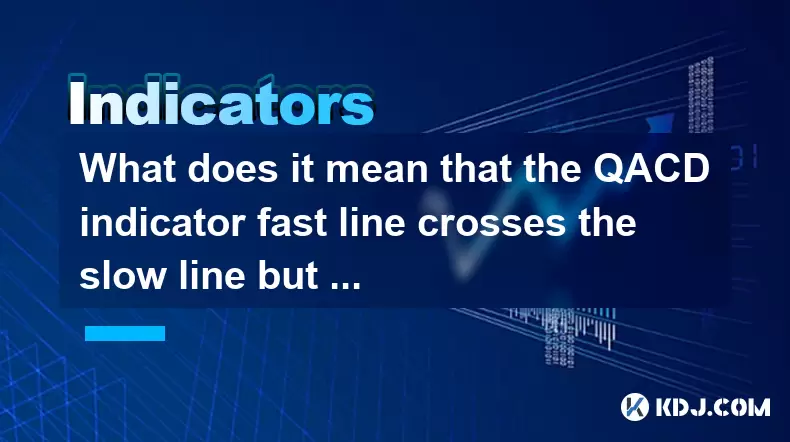
What does it mean that the QACD indicator fast line crosses the slow line but does not increase in volume?
Jun 20,2025 at 12:22pm
Understanding the QACD Indicator and Its ComponentsThe QACD (Quantitative Accumulation Convergence Divergence) indicator is a technical analysis tool used by traders to identify potential trend reversals, momentum shifts, and entry or exit points in cryptocurrency markets. It consists of two primary lines: the fast line, which reacts more quickly to pri...
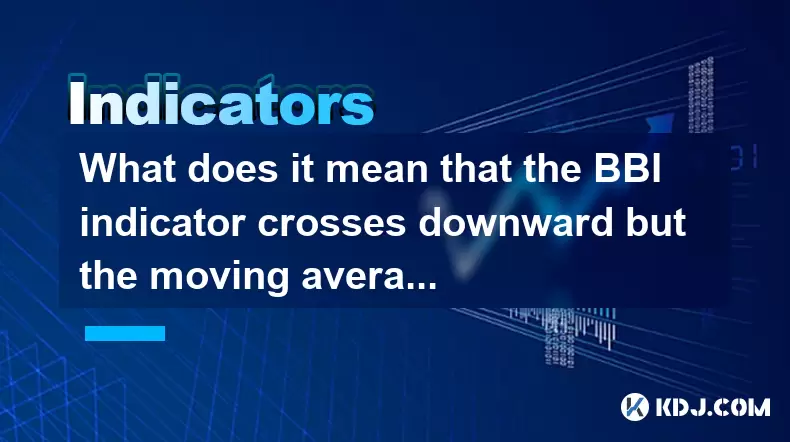
What does it mean that the BBI indicator crosses downward but the moving average does not cross?
Jun 20,2025 at 03:07pm
Understanding the Role of Blockchain in Cryptocurrency TransactionsBlockchain technology is the foundational infrastructure behind most cryptocurrencies. It serves as a decentralized, distributed ledger that records all transactions across a network of computers. This ensures transparency and eliminates the need for a central authority like a bank. Each...
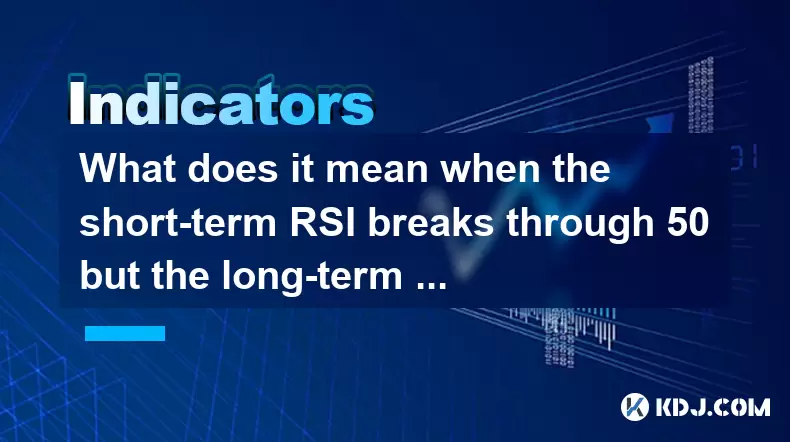
What does it mean when the short-term RSI breaks through 50 but the long-term RSI does not move in the RSI indicator?
Jun 20,2025 at 10:42am
Understanding the RSI Indicator and Its Dual-Term ApplicationThe Relative Strength Index (RSI) is a widely used momentum oscillator in technical analysis, primarily for identifying overbought or oversold conditions in an asset’s price movement. It typically operates on a scale from 0 to 100, with levels above 70 considered overbought and below 30 consid...
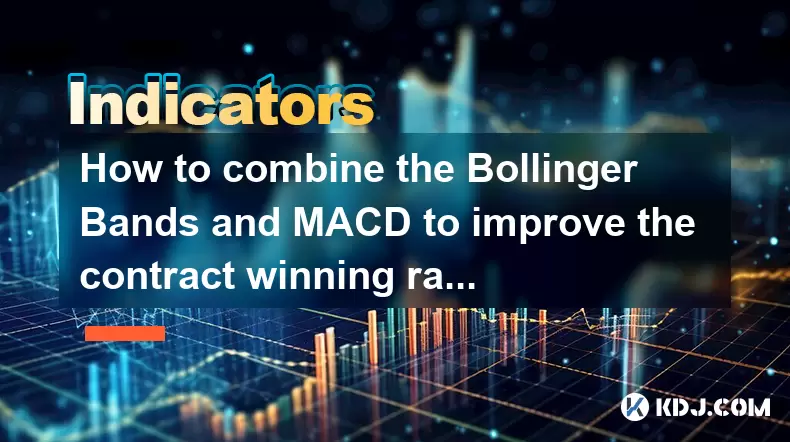
How to combine the Bollinger Bands and MACD to improve the contract winning rate?
Jun 19,2025 at 06:35pm
Understanding Bollinger Bands and MACD IndicatorsTo effectively combine Bollinger Bands and the MACD (Moving Average Convergence Divergence), it's essential to first understand what each indicator represents. Bollinger Bands consist of a middle moving average line and two outer bands that adjust based on market volatility. When prices move toward the up...
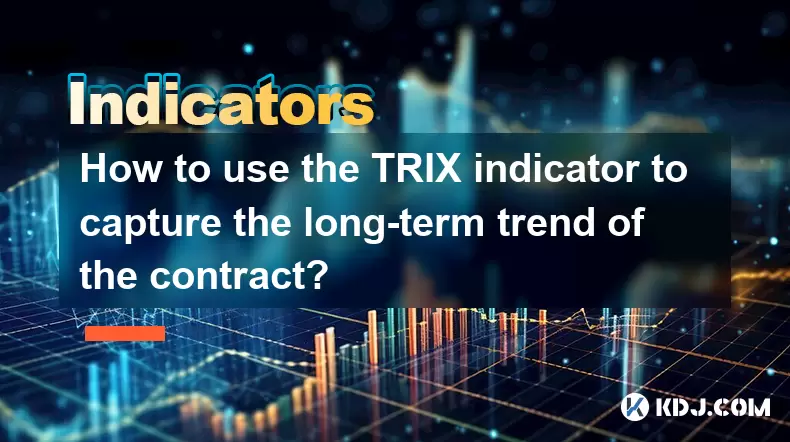
How to use the TRIX indicator to capture the long-term trend of the contract?
Jun 20,2025 at 09:14am
What Is the TRIX Indicator?The TRIX (Triple Exponential Average) indicator is a momentum oscillator used to identify oversold and overbought conditions, as well as potential trend reversals in financial markets. It is calculated by applying a triple exponential moving average to price data and then taking the percentage rate of change of that smoothed v...

Is it a real drop when KDJ crosses but the trading volume shrinks?
Jun 20,2025 at 03:49pm
Understanding KDJ and Its Role in Cryptocurrency TradingIn the realm of cryptocurrency trading, technical analysis plays a crucial role in identifying potential price movements. The KDJ indicator, also known as the stochastic oscillator with a J line added for momentum confirmation, is widely used by traders to gauge overbought or oversold conditions. I...

What does it mean that the QACD indicator fast line crosses the slow line but does not increase in volume?
Jun 20,2025 at 12:22pm
Understanding the QACD Indicator and Its ComponentsThe QACD (Quantitative Accumulation Convergence Divergence) indicator is a technical analysis tool used by traders to identify potential trend reversals, momentum shifts, and entry or exit points in cryptocurrency markets. It consists of two primary lines: the fast line, which reacts more quickly to pri...

What does it mean that the BBI indicator crosses downward but the moving average does not cross?
Jun 20,2025 at 03:07pm
Understanding the Role of Blockchain in Cryptocurrency TransactionsBlockchain technology is the foundational infrastructure behind most cryptocurrencies. It serves as a decentralized, distributed ledger that records all transactions across a network of computers. This ensures transparency and eliminates the need for a central authority like a bank. Each...

What does it mean when the short-term RSI breaks through 50 but the long-term RSI does not move in the RSI indicator?
Jun 20,2025 at 10:42am
Understanding the RSI Indicator and Its Dual-Term ApplicationThe Relative Strength Index (RSI) is a widely used momentum oscillator in technical analysis, primarily for identifying overbought or oversold conditions in an asset’s price movement. It typically operates on a scale from 0 to 100, with levels above 70 considered overbought and below 30 consid...

How to combine the Bollinger Bands and MACD to improve the contract winning rate?
Jun 19,2025 at 06:35pm
Understanding Bollinger Bands and MACD IndicatorsTo effectively combine Bollinger Bands and the MACD (Moving Average Convergence Divergence), it's essential to first understand what each indicator represents. Bollinger Bands consist of a middle moving average line and two outer bands that adjust based on market volatility. When prices move toward the up...

How to use the TRIX indicator to capture the long-term trend of the contract?
Jun 20,2025 at 09:14am
What Is the TRIX Indicator?The TRIX (Triple Exponential Average) indicator is a momentum oscillator used to identify oversold and overbought conditions, as well as potential trend reversals in financial markets. It is calculated by applying a triple exponential moving average to price data and then taking the percentage rate of change of that smoothed v...
See all articles

























































































